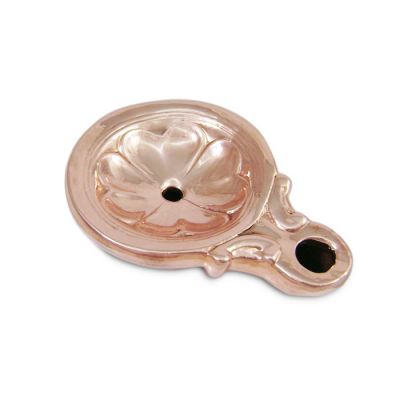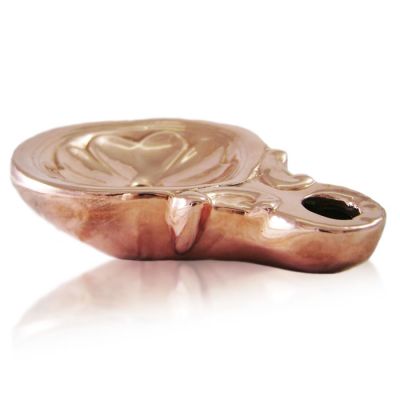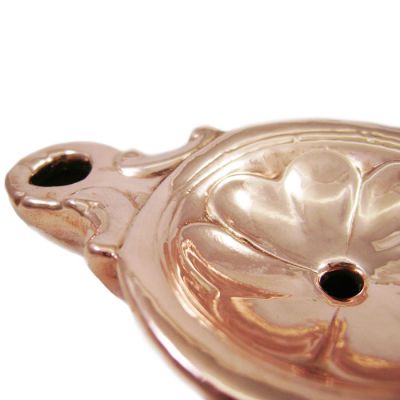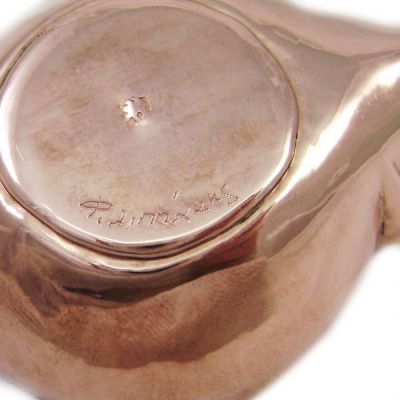A terracotta oil lamp with one muzzle, from Cyprus, dating to 50 - 100 A.D. It is decorated with engraved floral ornamentation.The oil lamp has a ring base, a spherical body and a muzzle where the wick burned. The oil lamps were used for domestic lighting or were carried to light the way outside. Our copy of this oil lamp is made of copper.
Dimensions: 8 cm x 2 cm x 5,5 cm
All prices include VAT.
Oil lamps were the most common artificial lighting sources in the Roman, Cypriot and Greek world. Clay and stone lamps are already known from Minoan Crete and the Mycenaean period. Lamps, that were fueled with olive oil and other vegetable oils, survived in great numbers. Some oil lamps were made of metal, and could be of highly elaborate forms incorporating statuettes and multiple nozzles, but clay was the most usual material.
Most of these clay lamps were shaped either by hand or by using moulds in workshops, that turned out large numbers of standardized products. The majority of small, probably inexpensive, clay lamps had a single nozzle for one wick, and therefore one flame. Most of them had a ring base, a spherical body with a disk, decorated with engraved ornamentation and a small handle. Placed on three-legged stands, or other domestic appliances, they were used exclusively for domestic lighting or were carried to light the way outside.
The central disk, was usually ornamented with relief pictorial motifs. The range of decoration included deities, genre scenes from everyday life, flowers, animals, hunting, public entertainments such as chariot-racing, and in late-Roman times, some Christian symbolism.
In addition to the many basic lamp-shapes, terracotta lamps were also made in a variety of elaborate forms, moulded to represent animals, feet and many other shapes.
The ancient Greeks used oil lamps for domestic lighting and for other practical needs of daily life, but also in burial rituals and other religious ceremonies. The production of oil lamps by pottery wheel began about 600 B.C., followed by mould production dating from 400 - 300 B.C. The moulding process resulted in the improvement of the quality and decoration of the lamps.
Oil lamps are displayed at the Cycladic Art Museum in Athens.
No posts found













